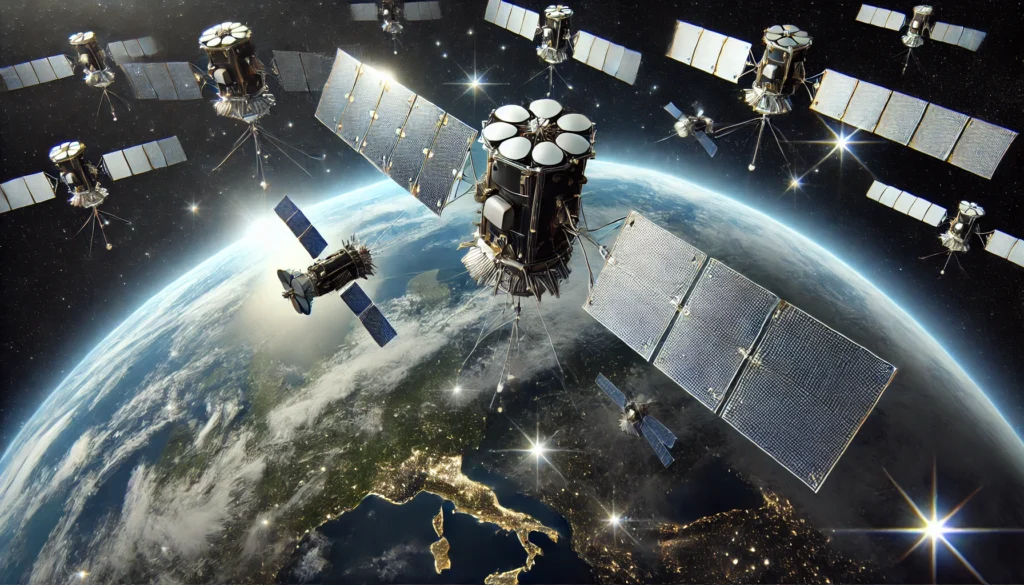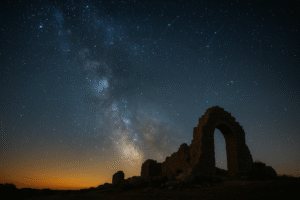Imagine looking up at the night sky and trying to gaze at distant stars, only to find your view obstructed not by clouds but by invisible interference. That interference is electromagnetic radiation (EMR), and it’s a growing problem for ground-based astronomy. With the increase in man-made devices emitting EMR and satellites reflecting signals back to Earth, the pristine view of our universe is under threat. In this blog, we will explore how electromagnetic radiation in space is affecting ground-based astronomy, why this issue is more relevant today than ever, and what can be done to mitigate its effects.
What is Electromagnetic Radiation?
Before diving into the core problem, let’s first understand electromagnetic radiation. EMR is energy that travels through space in the form of waves. It spans a broad spectrum, from radio waves and microwaves to infrared (IR), visible light, ultraviolet (UV), X-rays, and gamma rays. Some of these waves are beneficial for communication (like radio waves), while others, such as gamma rays, are used in specialized applications like medical imaging. However, when it comes to astronomy, even seemingly harmless waves like radio waves can cause significant disruptions to observations.
Why is Ground-Based Astronomy Important?
Ground-based astronomy has long been a cornerstone of our understanding of the universe. Large telescopes, such as those located at the European Southern Observatory (ESO) in Chile or the Mauna Kea Observatories in Hawaii, provide scientists with detailed observations of distant stars, planets, and galaxies. These observatories give astronomers the ability to track celestial events, measure cosmic radiation, and study phenomena like black holes and exoplanets.
However, these ground-based observatories are becoming increasingly vulnerable to interference caused by human activity—specifically, the rise of EMR.

How Does Electromagnetic Radiation Affect Astronomy?
Electromagnetic radiation from satellites, Earth-based communication devices, and even atmospheric pollution can distort or block the signals that astronomers rely on.
Radio Wave Interference:
The most affected range of the spectrum is the radio wave band. Many modern technologies like cell phones, Wi-Fi, and GPS systems rely on radio frequencies. As a result, radio telescopes, which are designed to capture faint signals from distant objects in space, often face interference from human-made sources. A famous example is the Square Kilometre Array (SKA), the world’s largest radio telescope currently being built across Australia and South Africa. The SKA’s sensitivity means it can be easily overwhelmed by radio signals from satellites and mobile networks, rendering certain observations impossible.
Light Pollution and Optical Astronomy:
While light pollution primarily refers to visible light from cities, it is another form of electromagnetic interference. Urban areas and artificial lights scatter photons into the atmosphere, making it challenging for optical telescopes to observe faint celestial objects. Even rural observatories are finding it hard to escape the glow of distant cities.
Satellite Constellations and Reflections:
Companies like SpaceX (an aerospace manufacturer) and Amazon’s Project Kuiper (a satellite internet company) are launching hundreds of satellites into orbit, aiming to provide global internet access. However, these satellites reflect sunlight, creating streaks of light in telescope images. The International Astronomical Union (IAU), a collective of astronomers, has raised concerns about these satellite constellations because they create bright trails in long-exposure astrophotographs, effectively “polluting” the data astronomers need for their research.
Case Studies
The SKA Radio Telescope Challenge
The SKA, as mentioned earlier, is a prime example of how EMR can disrupt astronomical research. The telescope’s location was chosen for its low levels of radio interference, but even in the remote deserts of Australia and South Africa, there are still concerns about satellite signals. To mitigate this, astronomers are lobbying for “radio quiet zones” where mobile networks and satellite signals are minimized, allowing for more accurate data collection.
The Impact of SpaceX Satellites
In 2019, when SpaceX started launching their Starlink satellites, astronomers began noticing streaks of light in their telescope images. These satellites reflect sunlight, and their sheer numbers—over 4,000 satellites planned—make it nearly impossible for astronomers to avoid them. Although SpaceX has responded by attempting to darken their satellites, the issue remains a significant concern for the future of astronomy.
The Search for Solutions
While the threat of electromagnetic radiation to ground-based astronomy is serious, there are several efforts underway to address this growing issue.
Radio Quiet Zones: Countries like Australia and South Africa are creating radio quiet zones where no electronic communication devices are allowed. This ensures that radio telescopes like the SKA can continue their observations without interference.
Satellite Adjustments: Satellite-launching companies are being urged to implement measures that minimize their impact on astronomical research. SpaceX, for example, is experimenting with dark coatings and sunshades to minimize the light reflections from its satellites. While this is a good start, it is clear that more needs to be done across the industry.
Better Filtering Technologies: Advances in filtering technology could help astronomers separate unwanted interference from useful data. These filters would need to be incredibly sensitive to distinguish between natural celestial signals and human-made noise.
Collaboration Between Astronomers and Governments: Many astronomers believe that stricter regulations on satellite launches and emissions are needed. Collaborative efforts between space agencies like NASA (National Aeronautics and Space Administration) and private companies could lead to policies that strike a balance between expanding communication technologies and protecting scientific research.
Conclusion
The rise of electromagnetic radiation in space, driven by modern technology and satellite constellations, poses a real threat to ground-based astronomy. However, it is not an insurmountable challenge. With collaborative efforts, technological advancements, and regulations, we can protect our view of the universe while still benefiting from modern communication systems. As more satellites are launched and the skies become more cluttered, we must ensure that the wonders of the universe remain visible to future generations. After all, our exploration of space has only just begun.
Author’s Note
As someone passionate about science, I believe it’s essential to maintain a balance between advancing technology and preserving scientific research. The night sky has always been a source of inspiration, and it is our responsibility to ensure that future generations can look up and wonder about the mysteries of the universe.
G.C., Ecosociosphere contributor.
References and Further Reading
- International Astronomical Union (IAU) Statement on Satellite Constellations: IAU
- Square Kilometre Array Official Website: SKA Telescope




